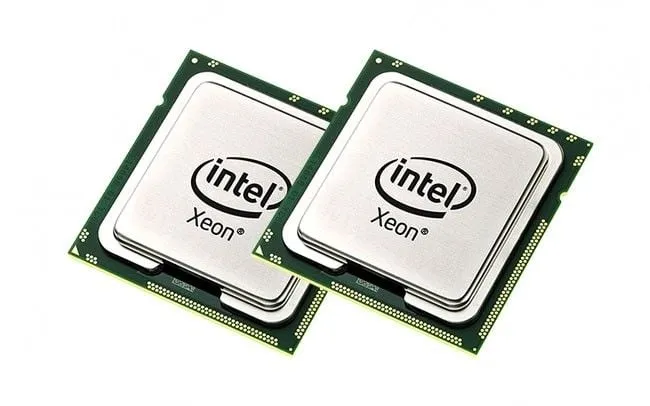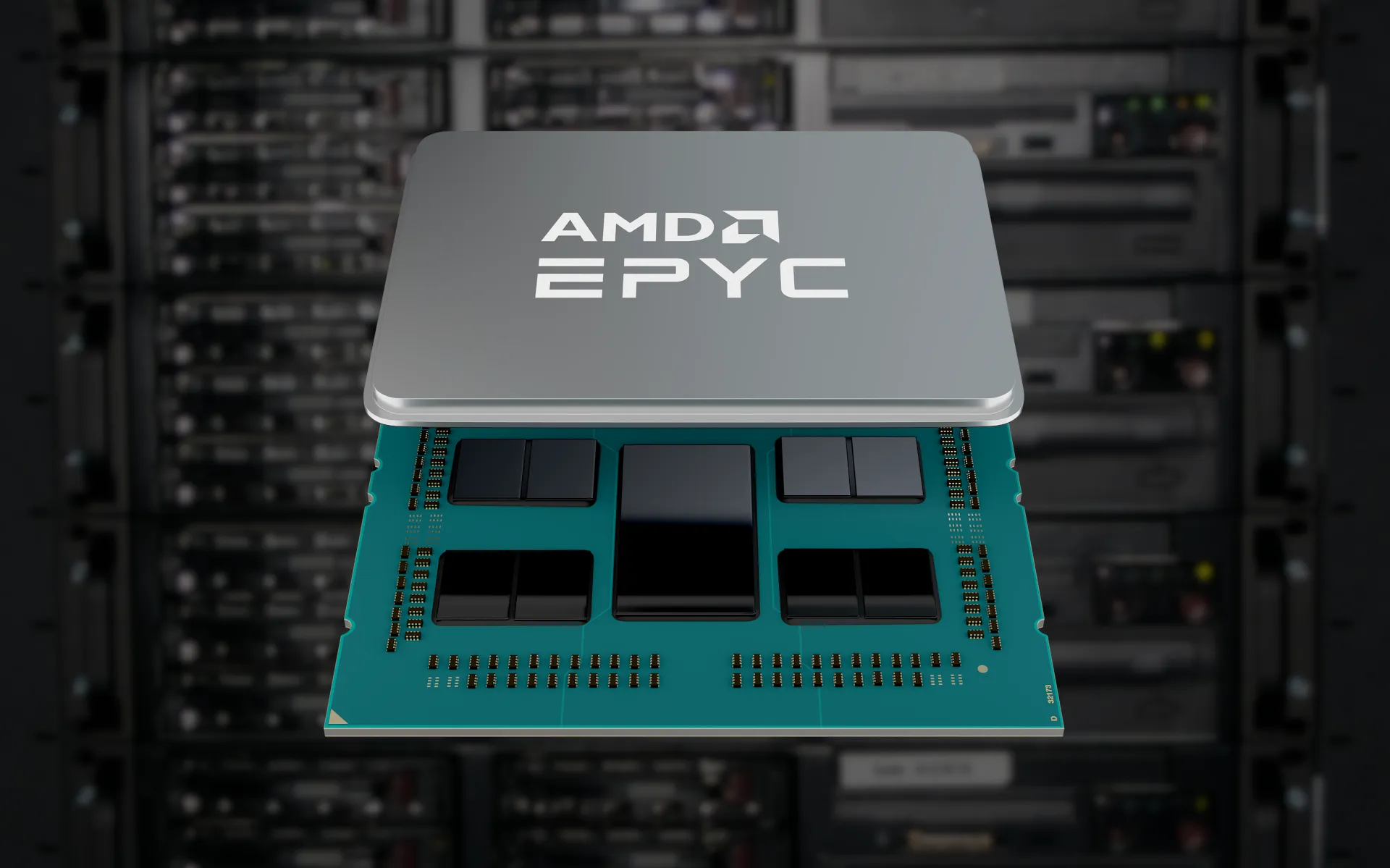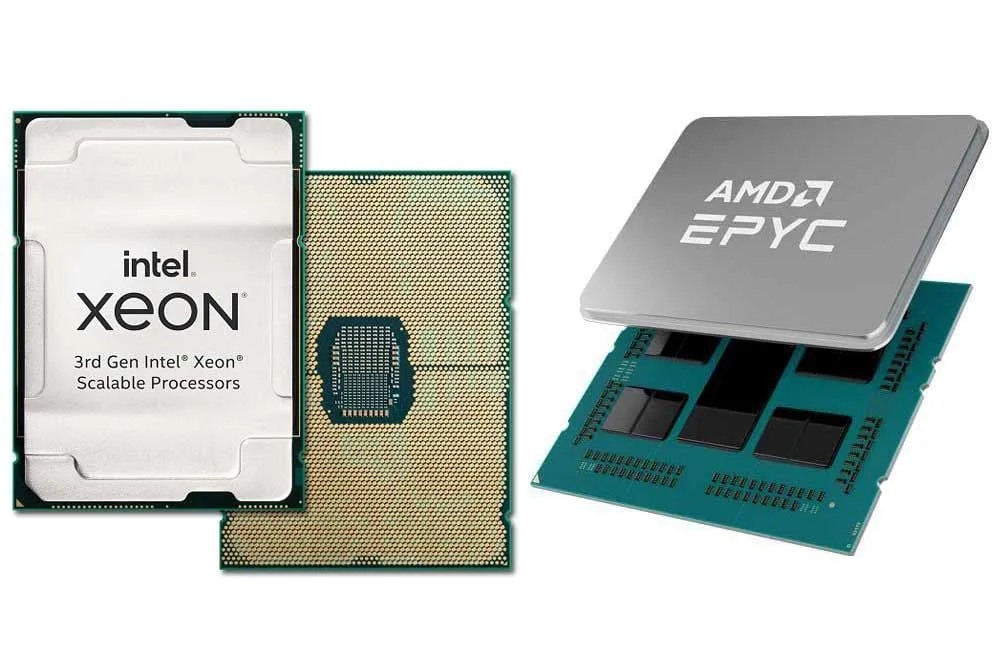In the modern digital era, choosing the right server CPU affects not only performance but also the overall operational efficiency of businesses. The two biggest names in this sector are Intel with its Xeon series and AMD with EPYC. Each option has its unique advantages. Technology researchers and industry experts continuously compare these two to determine the best choice for specific business needs. This article provides an in-depth analysis and comparison between Intel Xeon and AMD EPYC to help you make an informed decision for your IT infrastructure.
Intel Xeon
When it comes to server processors, Intel Xeon is often the first name that comes to mind. This high-end processor line, developed by Intel, is specifically designed for demanding applications that require robust computing power and high reliability. Xeon is widely used in fields such as enterprise servers, professional workstations, and large corporations. Optimized for virtualization and big data processing, Xeon can handle complex applications thanks to its support for ECC RAM, which detects and corrects data errors.

Overview
Intel Xeon comes in various versions to meet different market demands. With a powerful multi-core architecture, Xeon ensures stability and high performance in both single-threaded and multi-threaded tasks. Here are some key features of Xeon:
Multi-core architecture: Xeon processors can feature up to 56 cores, supporting up to 112 processing threads with Hyper-Threading technology.
Compatibility: Intel Xeon is widely supported by enterprise software due to its stability and high security.
Energy efficiency: Each Xeon generation improves power efficiency, reducing operational costs over time.
Key Features
To better understand Intel Xeon, let’s examine some of its key features that make it a preferred choice for many enterprises:
Support for new technologies: Xeon processors support DDR4 and, more recently, DDR5 RAM, along with PCIe 4.0, enhancing data transfer speeds.
Closed-system architecture: This enhances security and reduces vulnerability to external attacks.
Improved performance per watt: This helps save energy and reduce data center operating costs.
Performance Metrics
Performance is a crucial factor when choosing a server processor. Intel has heavily invested in research and development to improve Xeon’s performance across multiple generations. Some key performance metrics include:
Power consumption: The Xeon 6700E delivers up to 5.8x higher performance than previous generations, with a 3.4x improvement in energy efficiency.
Real-world tests: In specific benchmarks, Xeon has shown an 8% higher performance in applications like SVT-HEVC, making it a worthwhile investment for enterprises.
Use Cases
Intel Xeon is widely used across various industries. Some common use cases include:
Cloud servers: Xeon is well-suited for large-scale cloud computing systems requiring high processing power and local data storage.
Graphics and video processing: With multi-core and Hyper-Threading capabilities, Xeon excels in graphic design and video editing applications.
Networking: Every enterprise requires efficient server solutions to manage connectivity and data traffic.
AMD EPYC
In addition to Intel Xeon, AMD EPYC is a formidable competitor in the server processor market. Introduced in 2017, EPYC quickly gained traction with its outstanding features and competitive pricing. EPYC is well-known for its chiplet architecture, optimizing both production and performance.

Overview
AMD EPYC was developed to provide a powerful solution for data centers and large enterprises. With support for up to 64 cores and 128 threads, EPYC demonstrates superior performance in multi-threaded workloads. Some key aspects of EPYC include:
Chiplet architecture: EPYC utilizes a chiplet design to integrate multiple cores without increasing production costs, delivering better performance for the price.
PCIe 4.0 support: This technology provides higher bandwidth, optimizing data transfer capabilities.
Energy efficiency: EPYC processors deliver high performance while optimizing power consumption, reducing enterprise costs.
Key Features
Beyond performance, AMD EPYC offers various features to enhance server functionality. Some key features include:
Scalability and flexible architecture: EPYC enables businesses to expand their systems easily with chiplets and enhanced bandwidth.
AI and data analytics support: Thanks to its robust architecture, EPYC is highly suitable for AI applications and big data processing.
Seamless integration: EPYC is compatible with various software and hardware systems, ensuring smooth integration into enterprise environments.
Performance Metrics
AMD EPYC has demonstrated outstanding capabilities in various benchmark tests and real-world applications. Research from Cockroach Labs has shown that EPYC outperforms Intel Xeon in multi-threaded workloads. Key performance metrics include:
Big data processing: EPYC efficiently handles virtualized environments and large-scale data processing with up to 64 cores and 128 threads.
Lower power consumption: Whether under heavy or light loads, EPYC maintains low energy consumption, helping businesses save costs.
Use Cases
AMD EPYC has proven its efficiency in various real-world scenarios, such as:
Large data centers: Leading technology firms like AWS and Microsoft Azure have adopted EPYC to optimize performance.
AI and machine learning applications: EPYC offers a robust platform for AI and machine learning workloads due to its powerful processing capabilities.
Virtualized servers: EPYC excels in virtualization environments requiring high concurrent processing power.
Intel Xeon vs. AMD EPYC – A Comparison
With continuous advancements from both Intel and AMD, the competition between Xeon and EPYC is fiercer than ever. Each processor has its strengths and weaknesses, making it essential to choose based on specific business needs.

Price-to-Performance Ratio
Assessing the price-to-performance ratio is crucial when selecting a server CPU. Experts generally agree that AMD EPYC offers better value for money, allowing businesses to save costs while maintaining high performance. Key factors to consider:
Initial investment: Xeon typically has a higher upfront cost, making its performance-to-price ratio lower.
Long-term cost savings: While EPYC has a lower initial cost, it still delivers high performance, reducing the total cost of ownership.
Performance assurance: EPYC provides strong performance and efficient multi-tasking in demanding data center environments.
Ecosystem and Compatibility
The ecosystem and compatibility of both processor families are vital considerations. Intel has established a vast ecosystem with extensive enterprise software support. However, AMD is catching up:
Intel Xeon compatibility: Xeon runs seamlessly on many enterprise applications that AMD EPYC may not support.
Software integration: EPYC integrates well with modern software and technologies, enhancing the user experience.
Innovation and Future Prospects
In the fast-evolving tech industry, both Intel and AMD are continuously innovating. Some emerging trends to watch include:
Architectural advancements: Intel is developing next-gen Xeon processors with improved efficiency, while AMD is refining its Zen architecture.
AI and machine learning investments: Both companies are integrating AI capabilities into their products to enhance computational efficiency.
Future server technologies: As server architectures grow more complex, high-performance processors will be essential to meet rising demands.
Conclusion
The comparison between Intel Xeon and AMD EPYC highlights that each processor line has its own strengths and weaknesses, making them suitable for different use cases. Intel Xeon stands out in single-threaded performance and enterprise software compatibility, making it a top choice for organizations requiring stability and seamless software integration.
On the other hand, AMD EPYC excels in multi-threaded workloads with its high core and thread count, as well as larger memory bandwidth. This makes it ideal for environments requiring concurrent processing of complex tasks. Additionally, EPYC’s competitive pricing allows businesses to invest in high-performance computing without exceeding their budget.
Ultimately, the choice between Intel Xeon and AMD EPYC depends on factors such as budget, performance requirements, and the specific applications your business runs.
For more insights into the latest technology trends and hardware reviews, stay tuned to our blog. If you have any questions or need personalized advice, feel free to reach out to our support team.
>>> You may be interested in: What is DDR5 RAM? Comparing DDR5 RAM and DDR4 RAM










